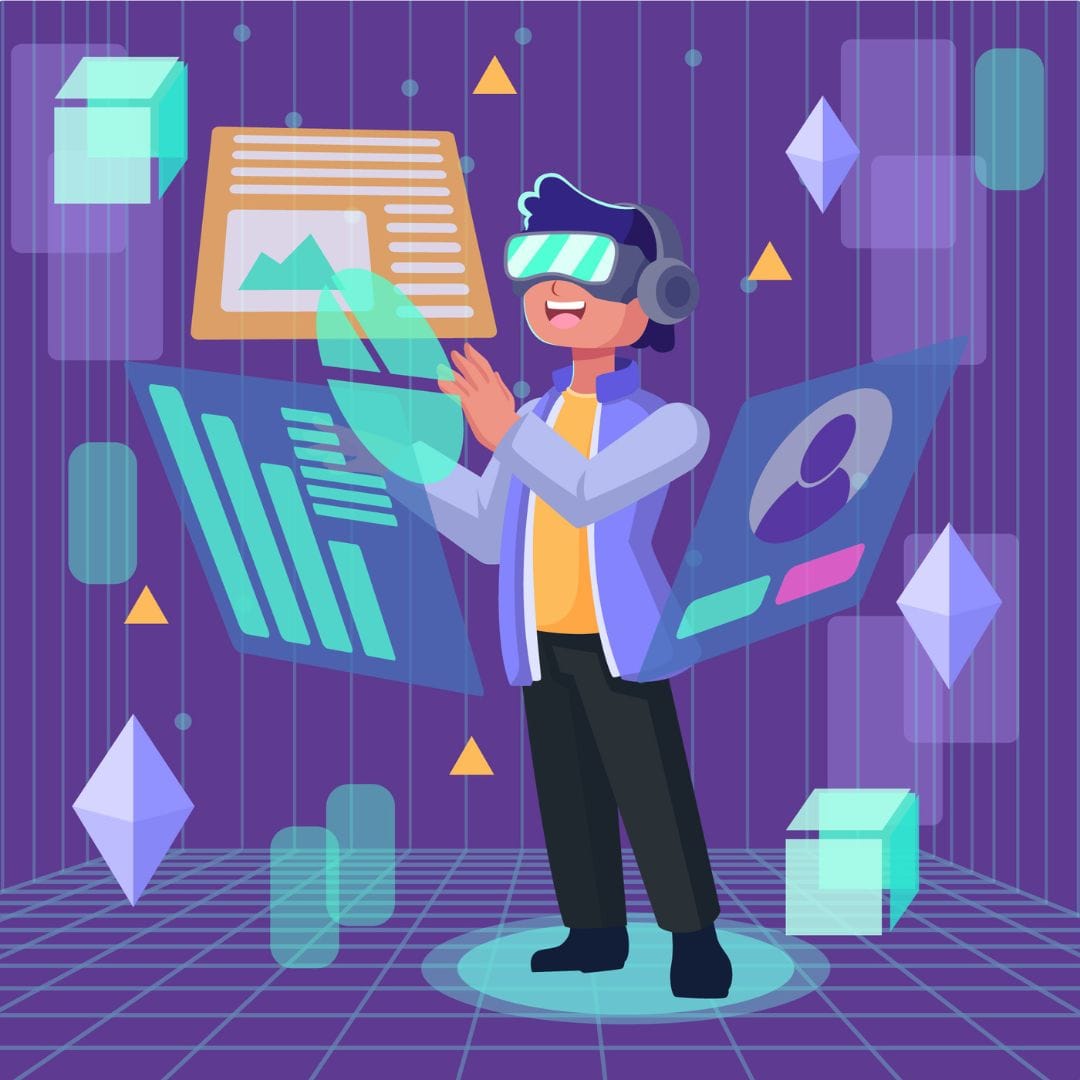Overview of the Animation Industry
The animation industry has come a long way from its humble beginnings of hand-drawn sketches and early mechanical motion pictures. Today, animation is an indispensable part of modern media, entertainment, marketing, education, and even business communication. The expansion of digital technologies has dramatically changed the landscape, allowing animators to bring stories, concepts, and ideas to life in ways that were previously unimaginable.
Over the years, animation has evolved from basic 2D sketches into sophisticated 3D renderings, augmented reality (AR), virtual reality (VR) experiences, and interactive animations. Animation has now become the backbone of various entertainment industries, from Hollywood blockbusters to video games, and it continues to play a critical role in conveying messages across marketing platforms and helping brands connect with consumers.
At Wenimate, an industry leader in explainer video production, we recognize the profound influence animation has in shaping the future of storytelling, business promotion, education, and beyond. The fast-paced development of new animation technologies and tools means that the future of animation is vibrant, innovative, and full of exciting opportunities.
Significance Across Industries
Animation’s influence goes beyond entertainment; it is now a pivotal component across various industries. Let’s dive deeper into how animation is being leveraged across sectors and how these advancements are shaping future opportunities.
Education
Education is one of the most dynamic fields that benefit from animation technology. With animated explainer videos, educational content can be made more accessible, engaging, and easier to understand. These types of videos not only break down complex concepts but also help make learning fun and interactive. Educators have long recognized the potential of visual storytelling to improve comprehension and retention of information.
The educational sector is also embracing 3D animation for scientific simulations, visual aids, and even training. These immersive and interactive experiences allow students to explore subjects like biology, physics, and history in an entirely new way. Imagine a student learning about the solar system not from textbooks but by interacting with a 3D simulation that lets them explore planets, and their orbits, and even witness solar phenomena in real time. This level of interactivity enhances the learning experience and makes abstract concepts more tangible.
As a provider of explainer videos, Wenimate specializes in crafting animated content that simplifies and elevates educational experiences. We create tailored educational videos for schools, universities, and other educational organizations, ensuring complex topics are easily digestible and highly engaging.
Healthcare
In healthcare, animation is increasingly being used to explain medical procedures, concepts, and even intricate biological processes. The healthcare industry often involves complex terms, treatments, and patient care protocols that may be challenging to explain through traditional methods. Here, animation plays a vital role in breaking down these intricate subjects into easily understandable visuals.
For instance, medical explainer videos can help patients better understand their diagnosis, the treatment plan, and the procedures they will undergo. Whether it’s a video demonstrating how to properly take medication or a step-by-step animation of surgery, these videos enhance patient comprehension and improve their confidence in their medical journey.
Furthermore, animation has proven useful in promoting healthy behaviourss and creating awareness campaigns. Animated videos can show how diseases spread, the importance of hygiene, or the benefits of exercise—all in a way that resonates more strongly with the audience.
Gaming Industry
The gaming industry is perhaps one of the most obvious beneficiaries of animation technology. As technology evolves, game developers use animation to build rich, immersive worlds, compelling characters, and captivating stories. The advent of advanced animation tools and rendering software has opened the door to increasingly realistic virtual experiences, such as 3D charactemodellinggng, motion capture, and stunning visual effects.
Animations in video games are no longer confined to simple 2D sprites or basic 3D models. Today’s gaming world features complex animated cutscenes, detailed character movements, and dynamic in-game animation that allows players to interact with their virtual surroundings in ways that were impossible just a few years ago. With the rise of VR and AR gaming, animation continues to play a crucial role in enhancing user experiences by making them more interactive and engaging.
Architecture and Engineering
Architecture and engineering have also been transformed by animation. Traditionally, architects and engineers would present their designs using blueprints or static 2D models. However, with the advent of 3D animation, they can now provide clients with dynamic walkthroughs of a building or structure before construction begins. This allows clients to experience the space from different angles and perspectives, enabling them to make informed decisions about the design.
3D animation also plays a key role in visualizing infrastructure projects such as roads, bridges, and urban planning. Through animated visualizations, stakeholders can see how proposed designs will impact the surrounding environment, potentially preventing costly changes down the road. For engineering projects, animation tools enable professionals to simulate real-world conditions, assess potential risks, and ensure designs meet safety standards.
Key Trends Shaping the Animation Industry
As technology evolves, new trends continue to emerge in the animation space. These trends are reshaping how animation is created and consumed, driving innovation and pushing the boundaries of creative possibilities. Let’s take a closer look at some of the key trends that are shaping the future of animation.
3D Animation
The demand for 3D animation is higher than ever before. While 2D animation is still widely used, 3D animation has taken the spotlight in various industries, particularly entertainment, gaming, and marketing. 3D animation enables creators to bring characters and environments to life in a visually striking and realistic manner. This realism adds an extra layer of immersion for viewers and allows storytellers to create visually stunning narratives.
In the marketing space, 3D animation is frequently used to demonstrate products, services, and technologies in action. Brands can create 3D product animations to showcase their features and benefits, providing customers with an engaging and informative experience. Whether used for advertisements or explainer videos, 3D animation enables companies to effectively convey their value proposition.
2D Animation (in Marketing)
While 3D animation has gained traction, 2D animation is still a dominant force in digital marketing. 2D animation offers simplicity, affordability, and flexibility, making it an ideal choice for explainer videos, social media campaigns, and brand promotion 2D animated explainer videos are one of the most effective ways for companies to communicate their brand message clearly and concisely.
The beauty of 2D animation lies in its versatility. Whether it’s used to introduce a product, explain a service, or highlight a brand’s story, 2D animation can be tailored to suit different tones, styles, and objectives. With businesses increasingly relying on video marketing for lead generation and brand awareness, 2D animation remains a key tool in content creation.
Hybrid Animation
Hybrid animation is the fusion of 2D and 3D techniques, offering the best of both worlds. This approach allows creators to blend traditional 2D elements with 3D visuals, creating an aesthetically unique experience. Hybrid animation is particularly useful for projects where both simplicity and depth are required.
For instance, hybrid animation is often used in branding and advertising, where it’s essential to maintain a recognizable, consistent style while still delivering depth and dynamic visuals. This versatility makes hybrid animation a popular choice for explainer videos, corporate branding videos, and creative ads.
Vertical Animation Videos
With the rise of mobile consumption, vertical videos have gained significant popularity. Vertical animation videos are designed to be viewed on mobile devices, fitting perfectly on users’ screens without the need for rotation. The mobile-first nature of this format is helping businesses reach consumers in new and innovative ways.
Many social media platforms, such as Instagram, TikTok, and YouTube Shorts, have contributed to the popularity of vertical videos. Brands looking to engage with younger, mobile-first audiences can create short, impactful animated videos in a vertical format to capture their attention.
Augmented Reality (AR)/Virtual Reality (VR) Animation
AR and VR are revolutionizing the animation industry, providing new opportunities for interactive storytelling. With AR, animations can be overlaid in the real world, allowing users to interact with digital content in a physical space. VR, on the other hand, creates fully immersive virtual environments, enabling users to experience animated worlds from a first-person perspective.
These technologies are already being used in gaming, but their applications extend to other industries, such as marketing, education, and healthcare. For example, AR animation can bring products to life in the consumer’s environment through their smartphone or AR glasses, while VR animation can create simulations for training purposes or virtual tours.
Depth Sensors
Depth sensors, such as LiDAR, are becoming increasingly integrated into animation workflows, particularly in the realm of 3D modelling and AR/VR applications. These sensors capture depth and spatial information, allowing animators to create more realistic and accurate environments. Depth sensors enable the creation of 3D objects and scenes that interact with real-world surroundings, providing a seamless fusion of physical and virtual worlds.
Kinetic Typography
Kinetic typography is a growing trend where text is animated in a visually engaging and dynamic way. Instead of static text, words and letters move, stretch, and transform creatively emphasizing the message. This technique is widely used in explainer videos, advertisements, and even social media content.
In a world full of content, kinetic typography grabs the viewer’s attention and helps the message stand out. By animating words and sentences, creators can emphasize key points, making them more memorable.
Blockchain and NFT
The rise of blockchain and NFTs has created new opportunities for animators to monetize their work. With blockchain technology, creators can securely register and sell digital assets, including animated content. NFTs offer a way for creators to sell unique digital items, such as one-of-a-kind animated clips or characters, to a global audience.
NFTs have the potential to disrupt traditional distribution models by giving animators direct control over their intellectual property. This creates a more decentralized, transparent, and efficient market for animated content, allowing creators to reach a global audience and retain ownership of their work.
Conclusion
The future of animation is filled with boundless opportunities, driven by emerging technologies such as 3D animation, hybrid animation, AR/VR, and blockchain. These technologies are not only reshaping how animation is created but also how it is consumed and integrated into various industries. The power of animation lies in its versatility, making it an invaluable tool for education, marketing, entertainment, and beyond.
As animation technology continues to evolve, industries will find even more ways to leverage its potential to connect with audiences and enhance their communication strategies. At Wenimate, we remain at the forefront of these advancements, using animation to create engaging, informative, and impactful explainer videos, corporate films, and more. Whether it’s simplifying complex concepts or bringing creative ideas to life, we are excited to be part of the animation revolution shaping the future.
As technology continues to evolve, animation will remain an indispensable tool for storytelling, business promotion, and educational communication. The future of animation is exciting, and innovation will continue to drive new trends and possibilities for years to come.


